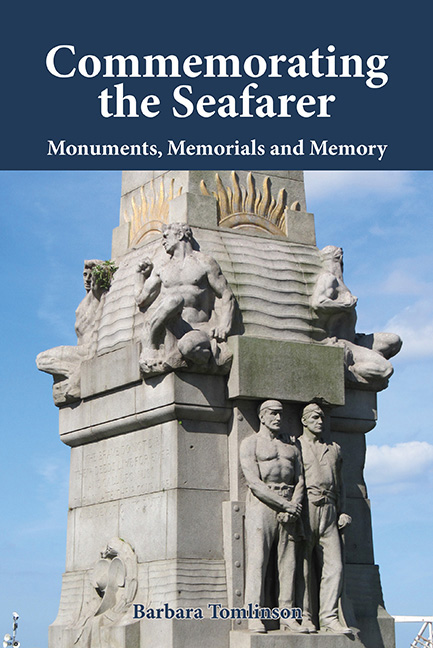Book contents
- Frontmatter
- Dedication
- Contents
- Illustrations
- Preface
- Acknowledgements
- Introduction
- 1 Shifting Loyalties: Naval Memorials, 1628–783
- 2 The Age of Heroes: Naval Memorials, 1783–815
- 3 Pax Britannica: Naval Memorials, 1815–914
- 4 Stormy Weather: Conflict and Sacrifice in the Twentieth Century
- 5 Commerce and Philanthropy: Mercantile Commemoration
- 6 Lost at Sea: Maritime Accidents
- 7 Maritime Explorers: Drake to Shackleton
- 8 Inshore: Fishermen, Lifesavers and Leisure
- Conclusion
- Bibliography
- Index
6 - Lost at Sea: Maritime Accidents
Published online by Cambridge University Press: 08 May 2021
- Frontmatter
- Dedication
- Contents
- Illustrations
- Preface
- Acknowledgements
- Introduction
- 1 Shifting Loyalties: Naval Memorials, 1628–783
- 2 The Age of Heroes: Naval Memorials, 1783–815
- 3 Pax Britannica: Naval Memorials, 1815–914
- 4 Stormy Weather: Conflict and Sacrifice in the Twentieth Century
- 5 Commerce and Philanthropy: Mercantile Commemoration
- 6 Lost at Sea: Maritime Accidents
- 7 Maritime Explorers: Drake to Shackleton
- 8 Inshore: Fishermen, Lifesavers and Leisure
- Conclusion
- Bibliography
- Index
Summary
Whatever the motives for travel by sea, it was a dangerous undertaking: death in various types of accident was all too common for seafarers and passengers until recent times. Statistics published in 1885 revealed merchant seafaring as the most hazardous occupation in Britain. Some vessels foundered, sometimes without trace, in mid-ocean; some were wrecked on shore, or sank following collision or explosions. The advent of steam brought its own hazards, but sailing ships were even more dangerous. Seafarers might be killed in personal accidents on board or in the loss or capsize of small boats. Although major passenger disasters such as the loss of the Herald of Free Enterprise (1987) still occur, safety on UK merchant ships improved throughout the twentieth century with advances in technology and procedures.
During the eighteenth century, the loss of naval vessels was commemorated by a series of important monuments. These were prestigious ships whose officers might be drawn from the social elite. Although, in a disaster, the elite were literally in the same boat as everybody else, early commemoration was about significant individuals dying in a common catastrophe.
Storm
An early shipwreck memorial at St Mary and St Lawrence church, Great Waltham, Essex, commemorates Hugh Everard, who went down with the Restoration when it was wrecked and lost with all hands on the Goodwin Sands, during the Great Storm of 26–27 November 1703 (Old Style) (fig. 64). Hugh was the second son of Sir Hugh Everard whose family had owned the nearby manor of Langleys for 200 years and had established the church as their mausoleum. Five naval ships in all were lost on the Goodwins that night in weather of exceptional ferocity at the cost of around 1086 lives.
Among the casualties, Everard's commemoration is exceptional. Only about 15 at the time of the disaster, he had already killed his first man: ‘A Descent being made into Spain, His choice and request put his courage upon action, Being the third yt landed, and ye Spaniard horse coming upon them, The Commander fell by his hand, And ye sword of the man of war grac’d the side of ye young stripling.’ His reputation, it claimed, would never die. The memorial adopts that standard feature of the shipwreck memorial, the relief of the sinking vessel, with ‘Spes nulla salutis’ (no hope of safety) inscribed below.
- Type
- Chapter
- Information
- Commemorating the SeafarerMonuments, Memorials and Memory, pp. 147 - 176Publisher: Boydell & BrewerPrint publication year: 2015



